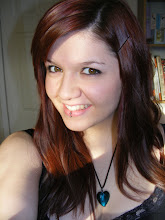Squash and stretch
The most important principle is "squash and stretch", the purpose of which is to give a sense of weight and flexibility to drawn objects. It can be applied to simple objects, like a bouncing ball, or more complex constructions, like the musculature of a human face. Taken to an extreme point, a figure stretched or squashed to an exaggerated degree can have a comical effect. In realistic animation, however, the most important aspect of this principle is the fact that an object's volume does not change when squashed or stretched. If the length of a ball is stretched vertically, its width (in three dimensions, also its depth) needs to contract correspondingly horizontally.
Anticipation
Anticipation is used to prepare the audience for an action, and to make the action appear more realistic. A dancer jumping off the floor has to bend his knees first; a golfer making a swing has to swing the club back first. The technique can also be used for less physical actions, such as a character looking off-screen to anticipate someone's arrival, or attention focusing on an object that a character is about to pick up.
Anticipation: A baseball player making a pitch prepares for the action by moving his arm back.
For special effect, anticipation can also be omitted in cases where it is expected. The resulting sense of anticlimax will produce a feeling of surprise in the viewer, and can often add comedy to a scene. This is often referred to as a 'surprise gag'.
Staging
This principle is akin to staging as it is known in theatre and film. Its purpose is to direct the audience's attention, and make it clear what is of greatest importance in a scene; what is happening, and what is about to happen. Johnston and Thomas defined it as "the presentation of any idea so that it is completely and unmistakably clear", whether that idea is an action, a personality, an expression or a mood. This can be done by various means, such as the placement of a character in the frame, the use of light and shadow, and the angle and position of the camera. The essence of this principle is keeping focus on what is relevant, and avoiding unnecessary detail.
Straight ahead action and pose to pose
These are two different approaches to the actual drawing process. "Straight ahead action" means drawing out a scene frame by frame from beginning to end, while "pose to pose" involves starting with drawing a few, key frames, and then filling in the intervals later. "Straight ahead action" creates a more fluid, dynamic illusion of movement, and is better for producing realistic action sequences. On the other hand, it is hard to maintain proportions, and to create exact, convincing poses along the way. "Pose to pose" works better for dramatic or emotional scenes, where composition and relation to the surroundings are of greater importance. A combination of the two techniques is often used.
Computer animation removes the problems of proportion related to "straight ahead action" drawing; however, "pose to pose" is still used for computer animation, because of the advantages it brings in composition. The use of computers facilitates this method, as computers can fill in the missing sequences in between poses automatically. It is, however, still important to oversee this process, and apply the other principles discussed.
Follow through and overlapping action
These closely related techniques help render movement more realistic, and give the impression that characters follow the laws of physics. "Follow through" means that separate parts of a body will continue moving after the character has stopped. "Overlapping action" is the tendency for parts of the body to move at different rates (an arm will move on different timing of the head and so on). A third technique is "drag", where a character starts to move and parts of him take a few frames to catch up. These parts can be inanimate objects like clothing or the antenna on a car, or parts of the body, such as arms or hair. On the human body, the torso is the core, with arms, legs, head and hair appendices that normally follow the torso's movement. Body parts with much tissue, such as large stomachs and breasts, or the loose skin on a dog, are more prone to independent movement than bonier body parts. Again, exaggerated use of the technique can produce a comical effect, while more realistic animation must time the actions exactly, to produce a convincing result.
Thomas and Johnston also developed the principle of the "moving hold". A character not in movement can be rendered absolutely still; this is often done, particularly to draw attention to the main action. According to Thomas and Johnston, however, this gave a dull and lifeless result, and should be avoided. Even characters sitting still can display some sort of movement, such as the torso moving in and out with breathing.
..........
Wednesday, 10 March 2010
Subscribe to:
Post Comments (Atom)

No comments:
Post a Comment